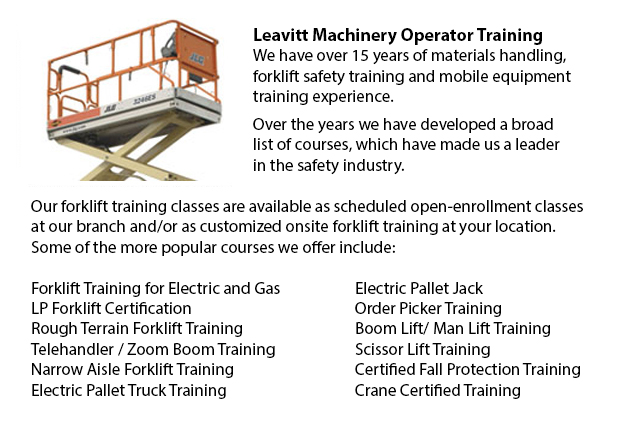
Scissor Lift License Oakville - The is an inherent risk in operating a scissor lift, as with all kinds and types of powered work tools will need proper handling to be able to avoid accidents which might cause damage or injuries. Companies have to ensure that staff using this particular machine have the required qualifications.
Unskilled workers should not be allowed by their companies to utilize scissor lifts. The lift is made to lift materials and people to different heights. Failure to know and completely follow safety standard can lead to injuries for the users or damage to the lift.
For scissor lift users, there is no legislation governing the use of fall protection. Nevertheless, manufacturers can suggest the use of fall protection and in various situations tying off in scissor lifts may be required by employer rules, job-specific risk assessments or local rules.
Before using the machinery, the scissor-lift operator should perform a thorough inspection to be able to ensure the equipment is in good working condition. This is the operator's task, even though the unit has already been in service that day. The equipment's operator's manual contains a pre-operation checklist.
Examples of what to look for when performing a pre-operation inspection consist of checking tire-inflation pressure, and checking ground controls and controls in the platform in order to make certain they are functioning. When extending or retracting the boom, watch for delayed movement on the fly section which can indicate cables are loose. Whilst operating the controls, make sure that the emergency stop switches are working. Operate functions against the equipment's cutout switches. Check the boom control system by cycling a boom lift to the furthest extent of its operating envelope. Safety limiters should automatically stop the unit before it moves into an unstable position, if they are working correctly. If they aren't, shut down the lift and make certain that it is repaired before it is utilized again.
Safe and proper operating procedures must be followed always. Levers must be operated with controlled, even pressure. A control lever should never be pushed from one position to the opposite position. The lever must be shifted to neutral, prior to stopping, and after that proceeding in the desired direction. When released, control switches and levers should automatically return to the neutral position. Depress the foot switch prior to operating platform controls.
-
Order Picker License Oakville
Order Picker License Oakville - Order preparation operation or order picking as it is more normally known is a method used within warehouse operations and consists of employees called order pickers. The order picker's task is to collect and take arti... More -
Forklift Operator Certification Oakville
Forklift Operator Certification Oakville - Forklift operator certification is normally needed for personnel working within industrial, warehouse or construction setting to guarantee the safe utilization of forklifts. Workplace training need to follow... More -
Scissor Lift Certification Oakville
Scissor Lift Certification Oakville - A lot of worksites and tradespeople like iron workers, welders and masons utilize scissor lift platforms to help them reach elevated work areas. The utilization of a scissor lift is usually secondary to their tra... More -
Forklift Training Courses Oakville
Forklift Training Courses Oakville - When forklift operator safety training is customized for illiteracy, training time is reduced by 50%. Train the trainer, forklift training certification and lift-truck operator driver safety training evaluation pr... More -
Manlift Training Oakville
Manlift Training Oakville - There are numerous manlift training programs which offer a review of the manlift machinery. The practicum portion of the training is one more vital portion of the course. In this section the trainee has chance to demonstra... More -
Boom Lift License Oakville
Boom Lift License Oakville - To operate an aerial boom lift, operators should be licensed through training that can be obtained utilizing both classroom sessions and practical training and by attaining a boom lift license. Instruction should be given... More -
Crane / Overhead Crane / Self-Erect Crane / Truck Mounted Crane / Hydraulic Cranes Training in Oakville
Bridge cranes or likewise called overhead cranes are actually a type of industrial material handling crane using a line and hook mechanism that runs on a horizontal beam running along two widely separated rails. Several overhead cranes could be seen... More -
Telehandler Training in Oakville
Telescopic handlers normally called telehandlers for short, are an extremely popular piece of heavy construction machinery. They are widely utilized in the construction and agricultural trades. These machines have maximum reaching ability and could g... More

Forklift Training Oakville
TOLL FREE: 1-888-254-6157
Oakville, Ontario
forklifttrainingoakville.com
Email Us
About Us


